Green has long been associated with growth, harmony, and tranquility. By integrating green color combinations into your interiors, you can effortlessly bring the calming essence of nature into your home. In this article, we’ll explore various shades of green colour combinations and how to pair them for a sophisticated, inviting space.
Sage Green Walls + Neutral Accents
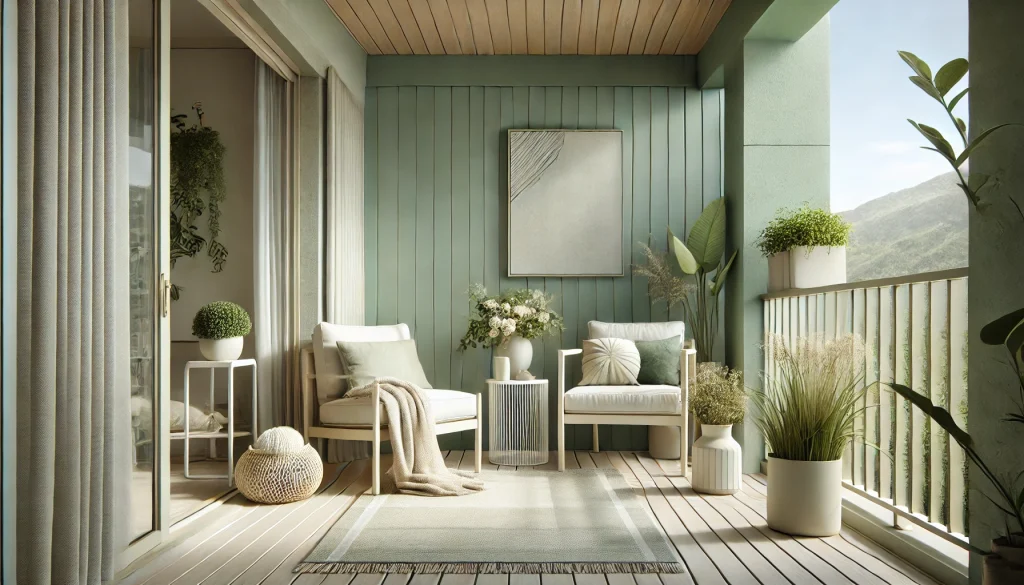
Why it works: Sage green adds a soothing, organic ambiance. Neutral accents (white, beige, or taupe) keep the room light and airy, letting sage take center stage without overwhelming.
Emerald Green Sofa + Metallic Details
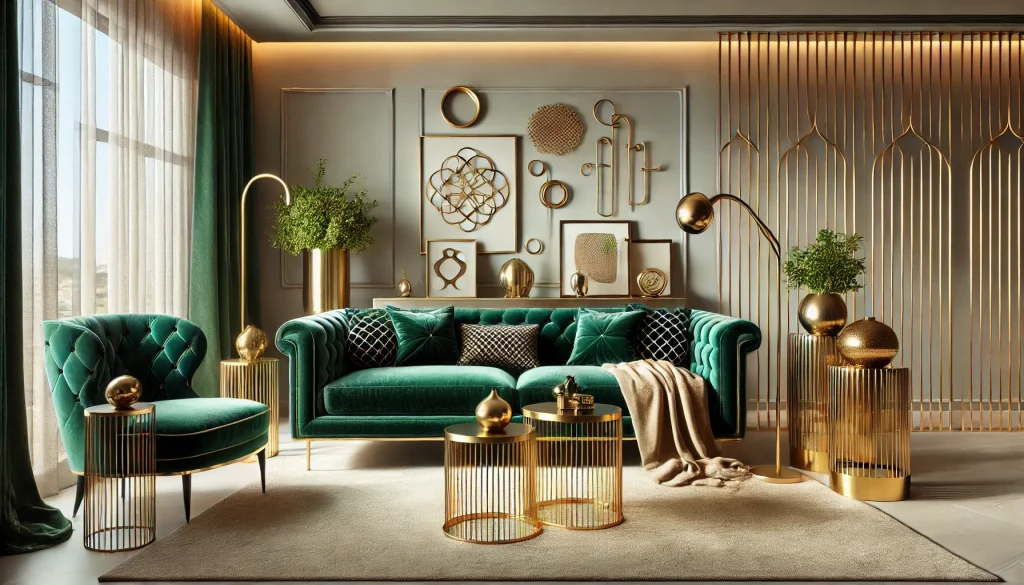
Why it works: An emerald green sofa creates a luxurious focal point. Pair it with brass or gold side tables and décor for a glamorous, high-contrast finish.
Forest Green Accent Wall + Soft Furnishings
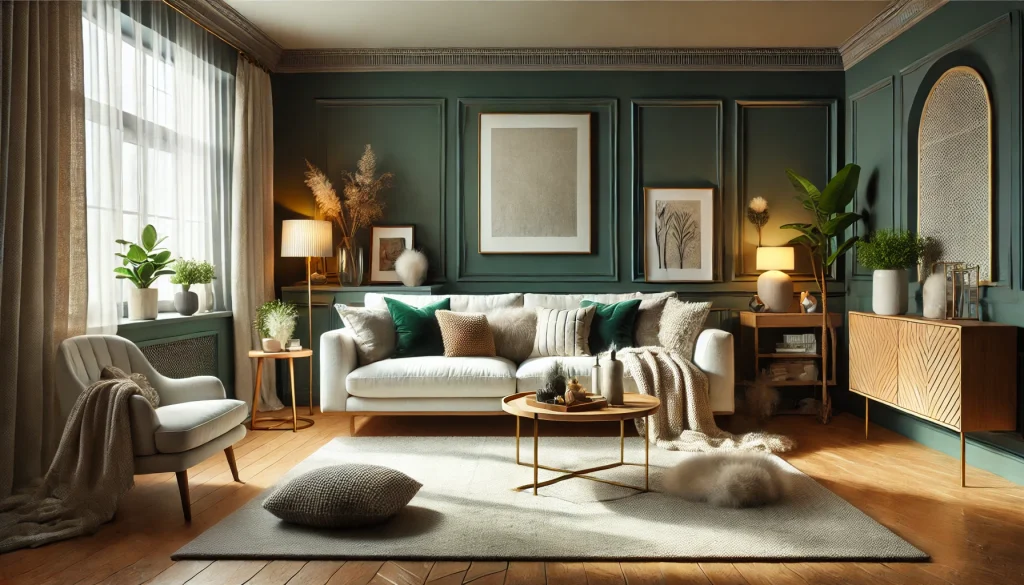
Why it works: A deep, forest green wall can add depth and drama. Balance the boldness with pale textiles (like cream or light gray upholstery) to ensure the space feels cozy, not claustrophobic
Read More: Modern Living Room Interior Design Ideas for Indian Homes
Mint Green Kitchen Cabinets + White Backsplash
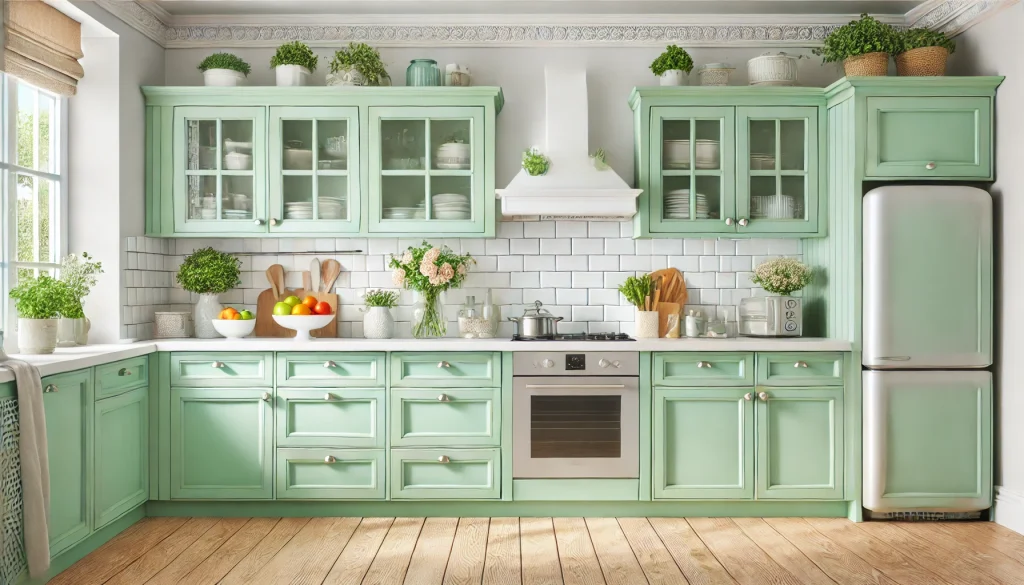
Why it works: Mint green has a fresh, retro charm. When paired with a crisp white backsplash and countertops, your kitchen gains a bright, cheerful look that feels timeless.
Olive Green Curtains + Earth-Toned Furniture
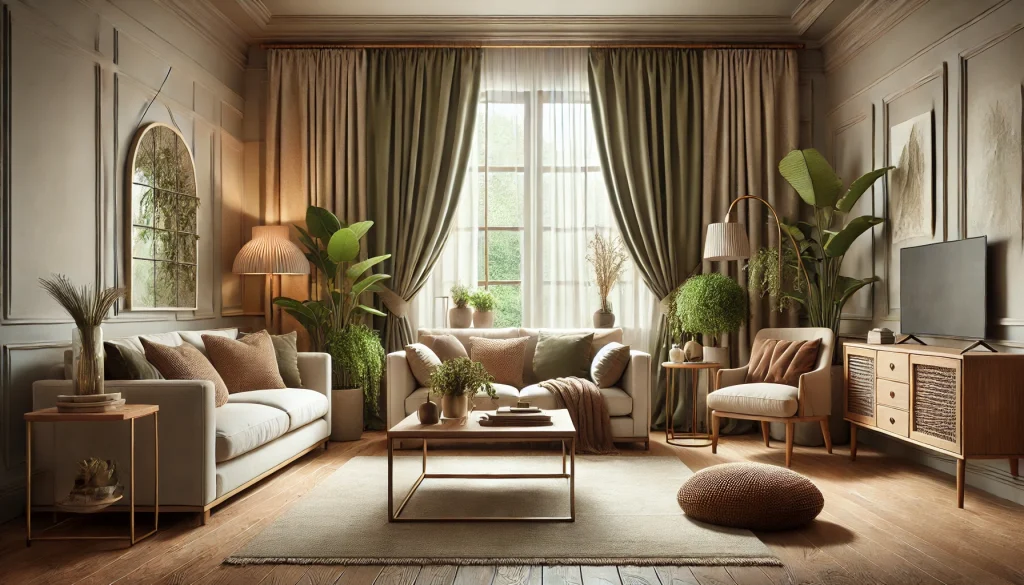
Why it works: Olive green drapes instantly warm up a space. Combine them with wooden furniture and earthy browns for a cohesive, nature-inspired palette.
Green-on-Green Layering
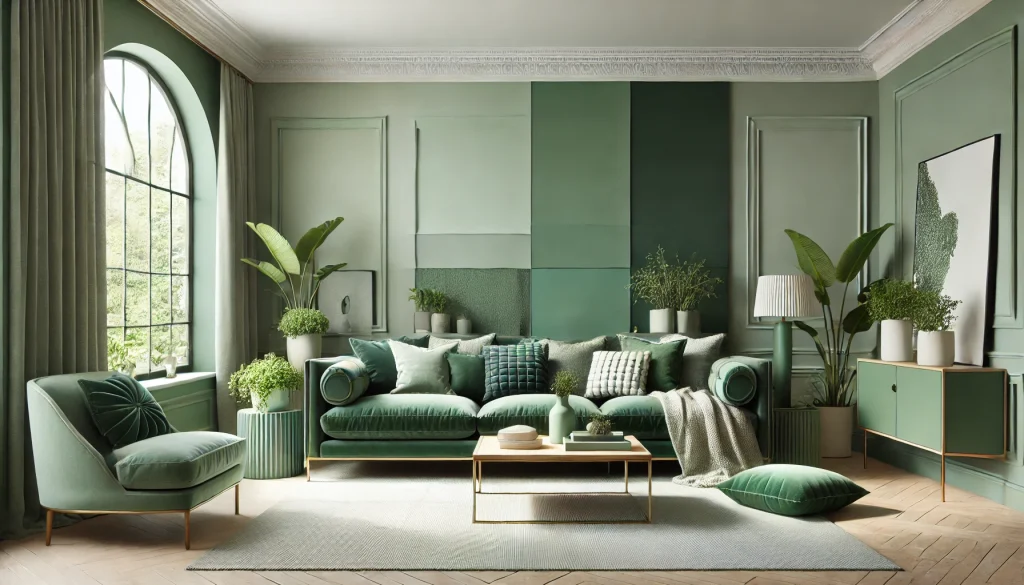
Why it works: Layering various shades of green—light, medium, and dark—adds depth and dimension. Think sage green walls, darker emerald upholstery, and lighter mint or pistachio accessories.
Read More: Trending Bedroom Interior Design Ideas
Lime Green Accents in a Gray Room
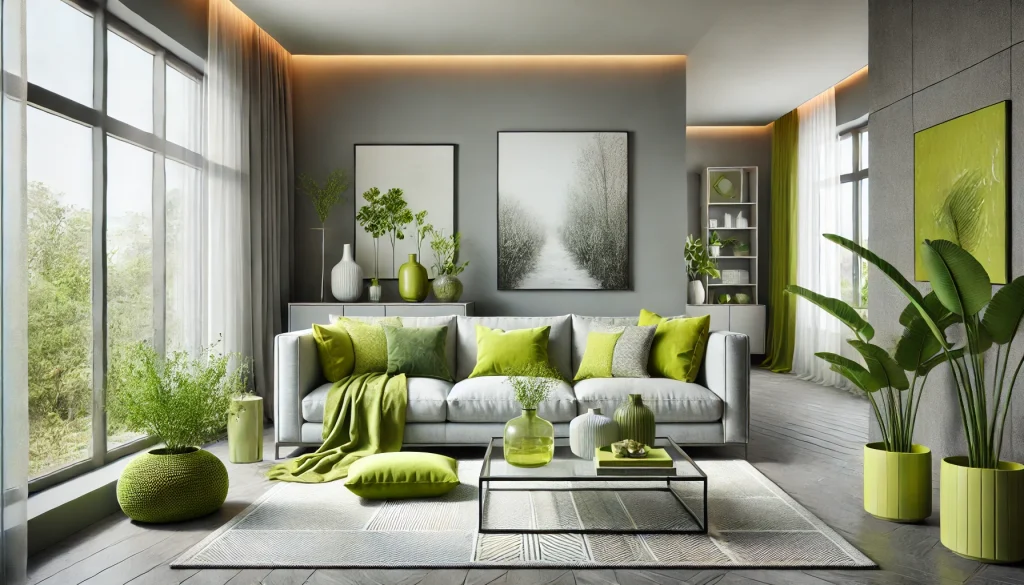
Why it works: Lime green pops against a neutral gray base, injecting a burst of energy without requiring a full color overhaul. Throw pillows, rugs, or vases in lime green can instantly lift a room’s mood.
Jungle Prints + Subtle Green Walls

Why it works: Botanical or tropical prints bring a playful vibe to living spaces. Keep walls in a subdued green, letting bold jungle-inspired patterns shine without clashing.
Green-Hued Tile Backsplash in the Bathroom
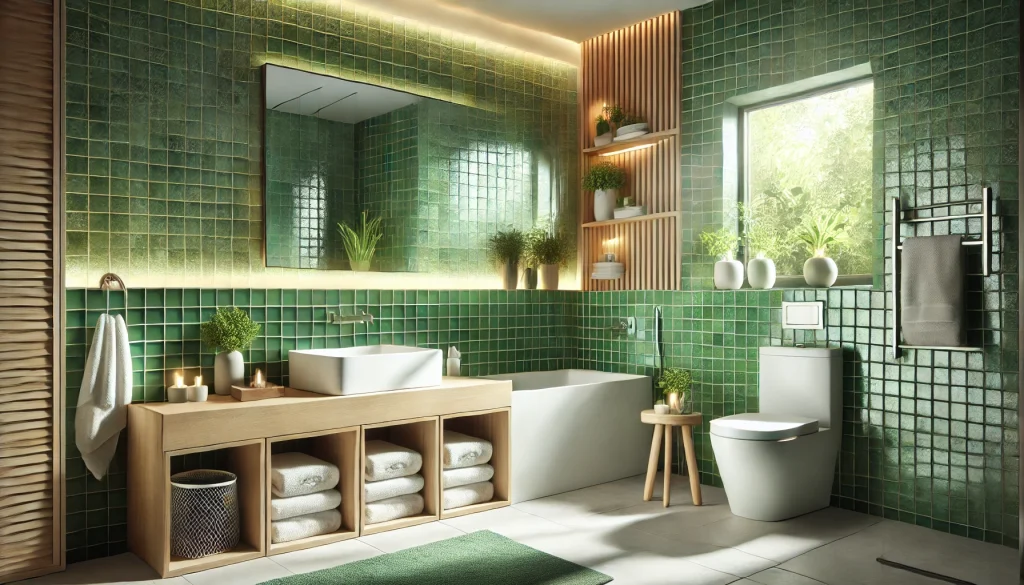
Why it works: Bathrooms are a great place to experiment with color. A green tile backsplash or accent wall contrasts nicely with white fixtures, making the room feel like a spa-like sanctuary.
Read More: The Impact of AI on Interior Design
Green Velvet Armchair + Neutral Textures
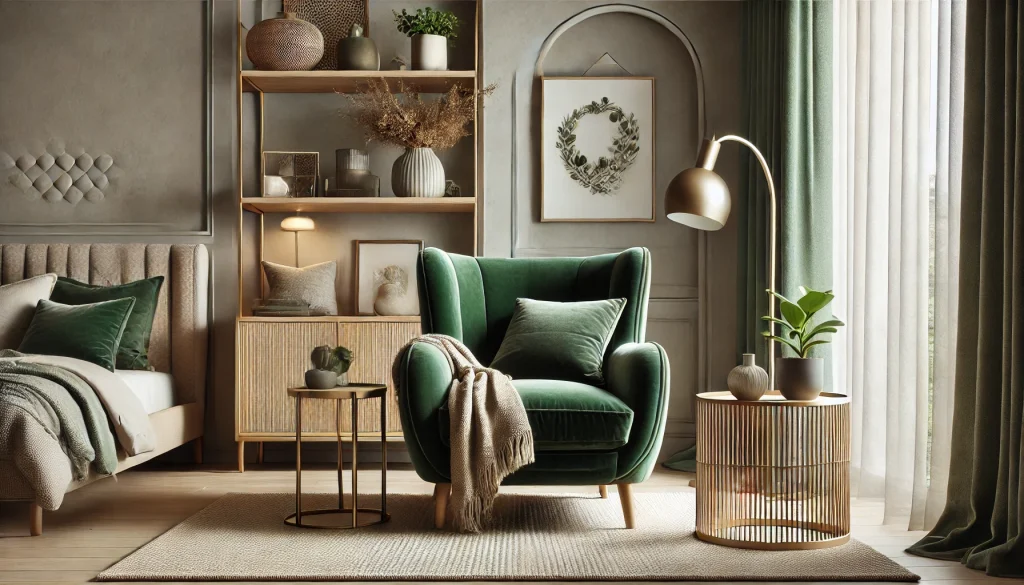
Why it works: A plush green velvet chair or loveseat exudes luxury. Surround it with woven rugs, linen curtains, and light-toned wooden elements for a balanced look.
Pastel Green Nursery + White Furniture
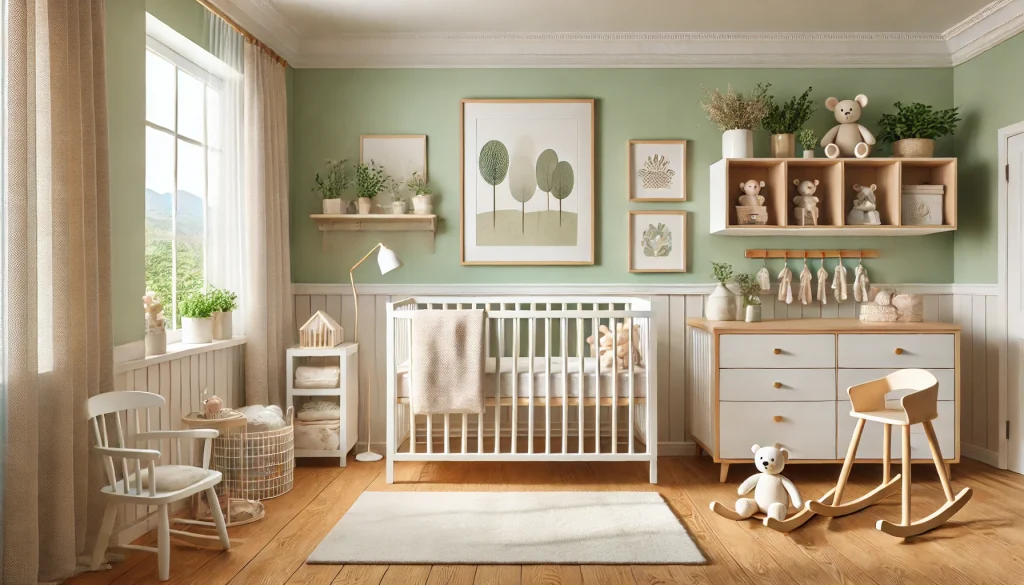
Why it works: Pastel green is calming and gender-neutral, perfect for nurseries. White cribs, dressers, and shelving keep the space bright and clean while highlighting the soft green hue.
Dark Green Paneling + Gold Framed Artwork
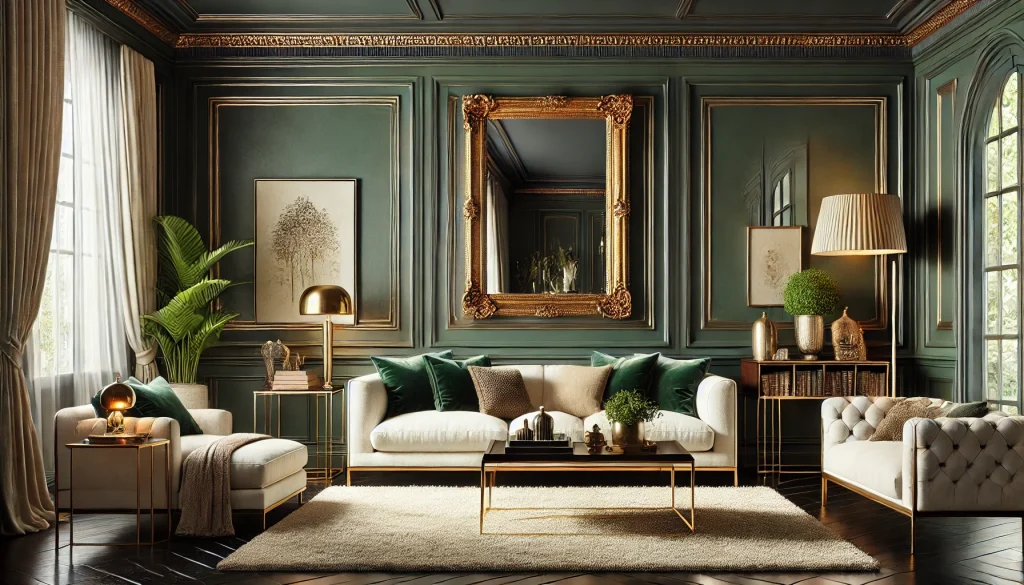
Why it works: Dark green paneling (or wainscoting) brings a refined, traditional feel. Gold-framed mirrors or art pieces stand out beautifully against the rich backdrop.
Read More: Luxury Bedroom Interior Design Ideas
Two-Toned Walls: Green + White
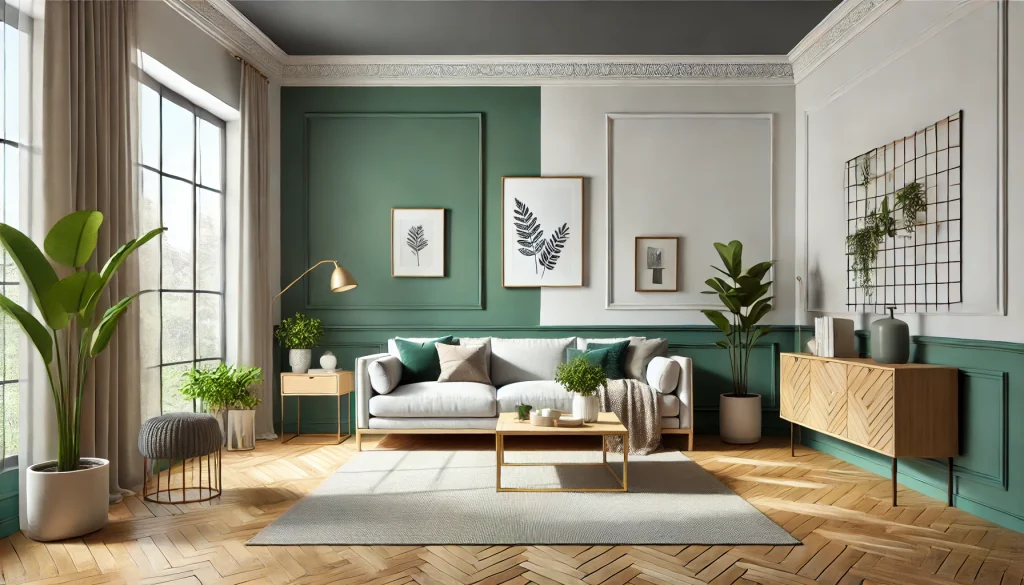
Why it works: Painting the lower half of your walls green and the upper half white (or vice versa) breaks up the room visually. This technique can also make ceilings look taller and rooms feel more spacious.
Green Textiles in a Rustic Chic Setting
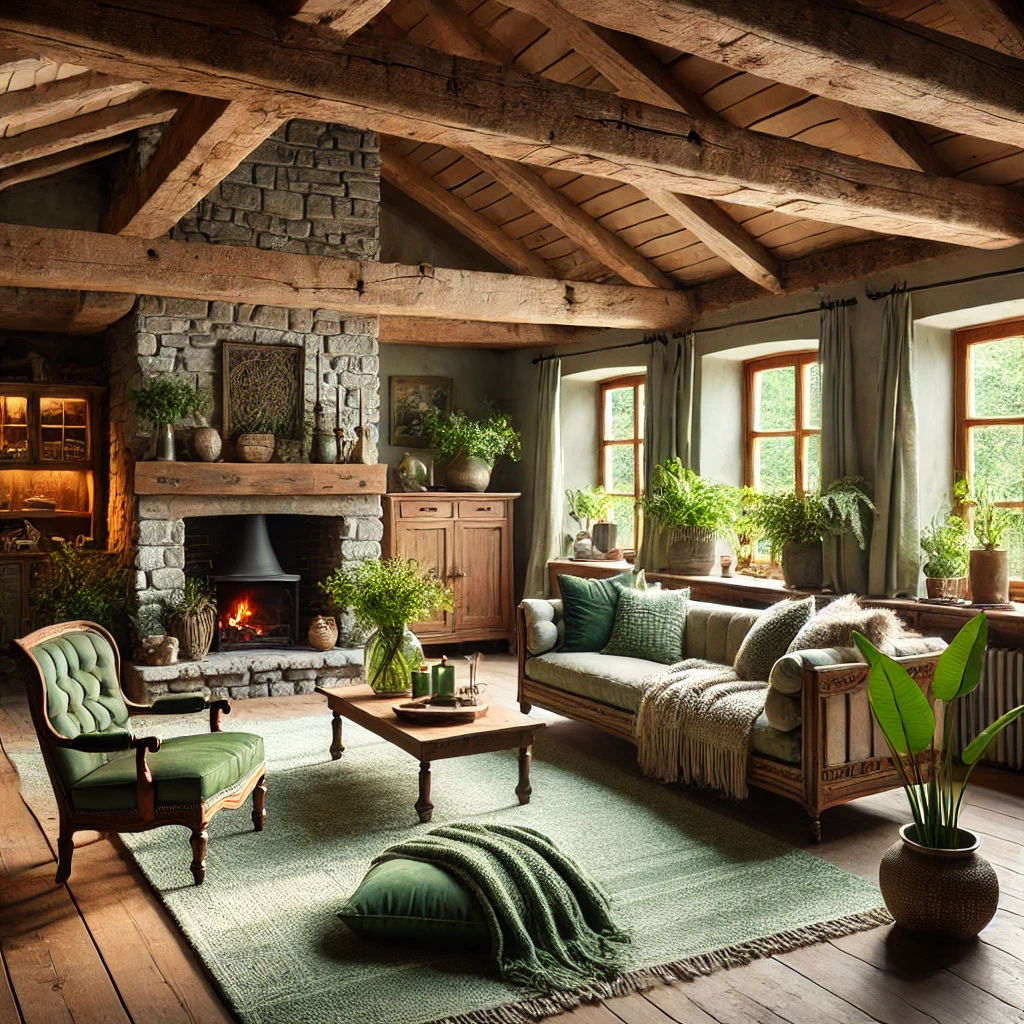
Why it works: In a home with exposed beams, stonework, or reclaimed wood, choose green rugs, blankets, and cushions to emphasize nature’s presence and enhance the rustic charm.
Monochromatic Scheme with Plants
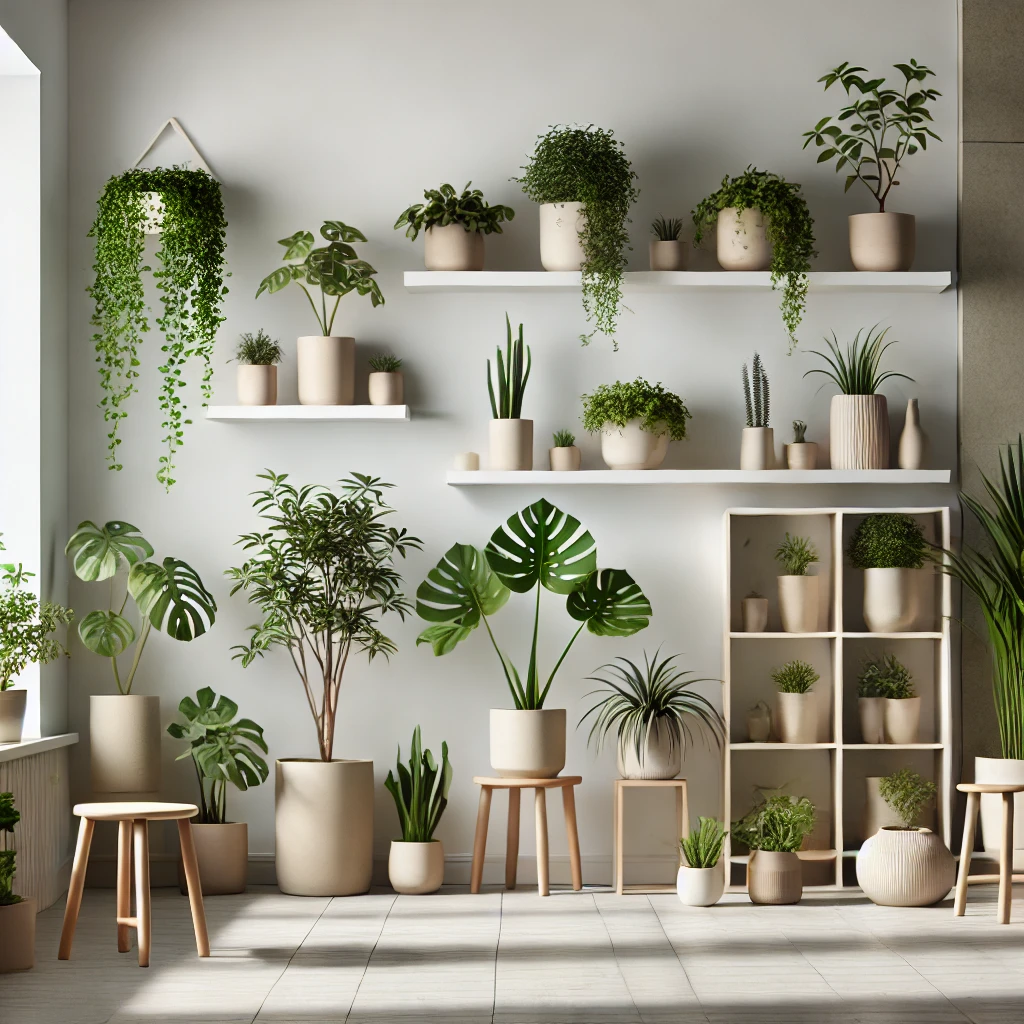
Why it works: Even if you stick to predominantly white or beige walls, you can bring in a monochromatic green scheme through houseplants, pots, and planters. Vary the plant types and sizes for visual interest, and let the greenery unify the design.
Read More: 10+ Affordable Bathroom Tile Design Ideas
Conclusion
There’s no one-size-fits-all solution when it comes to green interiors. Whether you lean toward subtle sage or dramatic emerald, let your style preferences lead the way. Remember, the right color combination is the one that resonates with you.
Frequently Asked Questions
Lighter shades like mint, pastel green, or sage can make small rooms appear more spacious. Pair these hues with light or neutral furniture and décor to maintain an airy feel.
Common favorites include green and white, green and gray, green and beige, and green with metallic accents like gold or brass. These palettes are versatile and work with various design styles.
It depends on the room size and your design goals. Painting all walls a soft, muted green can create a tranquil environment, while a bold accent wall in emerald or forest green can add drama without overwhelming the space.
Use green décor items like throw pillows, rugs, curtains, or artwork. Indoor plants are also a great way to bring in a natural green element, enhancing the room’s ambiance while purifying the air.
This largely depends on the shade of green. For lighter hues, modern and minimalist furniture works well. Darker greens can handle more traditional or vintage pieces with ornate details and richer textures.
Good lighting is important for any color scheme, but especially so with darker greens. Use warm or neutral light bulbs and consider layered lighting (overhead, task, and accent lighting) to highlight the depth of green shades.
Balance is key. Pair green with complementary neutrals like white, beige, or gray. Add different textures (like woven baskets, metal accents, or wooden surfaces) and contrasting accessories to break up the green and add visual interest.

 HDFC Home Loan
HDFC Home Loan SBI Home Loan
SBI Home Loan
